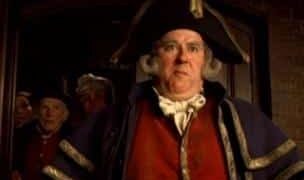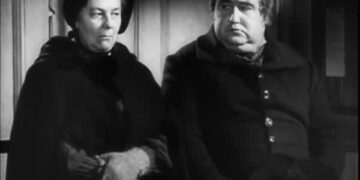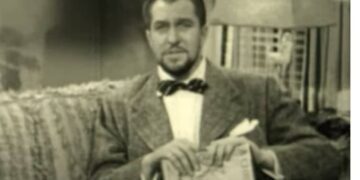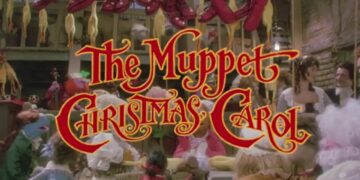Lionel Bart and Charles Dickens are two legendary figures in the world of literature and entertainment. Both have left an indelible mark on society with their timeless works and captivating storytelling. In this article, we will delve into the fascinating biographies of these remarkable individuals, explore their cinematic impact, and uncover some intriguing tidbits about their lives. Whether you are a fan of their works or simply curious about their legacies, this article will provide a comprehensive look into the lives of Lionel Bart and Charles Dickens.
Biography of Lionel Bart
Lionel Bart, born on August 1, 1930, in London, England, was a renowned composer, songwriter, and playwright. He is best known for his musical adaptation of Charles Dickens’ “Oliver Twist,” aptly titled “Oliver!” Bart’s early life was marked by a passion for music, and he began his career as a singer and performer in the late 1940s. However, it was his talent for songwriting that propelled him to fame.
Bart’s brilliance as a composer and lyricist was evident in his other notable works, including “Blitz!” and “Fings Ain’t Wot They Used T’Be.” Despite his immense success, Bart faced personal and financial challenges throughout his life. He struggled with alcoholism and faced bankruptcy at one point. Nevertheless, his contributions to the world of musical theater remain timeless, and his songs continue to be loved by audiences around the globe.
Biography of Charles Dickens
Charles Dickens, born on February 7, 1812, in Portsmouth, England, was a prolific writer and social critic. His works, such as “Great Expectations,” “A Tale of Two Cities,” and “David Copperfield,” have become classics of English literature. Dickens’ childhood was marred by poverty and hardship, which greatly influenced his writing. His ability to vividly portray the struggles of the lower classes earned him a reputation as a champion of the poor.
Despite his humble beginnings, Dickens’ literary prowess and keen observations of society propelled him to become one of the most celebrated writers of his time. His novels often explored themes of social injustice, poverty, and the stark contrast between the rich and the poor. Dickens’ works continue to be studied and cherished for their profound impact on literature and their timeless relevance to society.
The Cinematic Impact of Lionel Bart and Charles Dickens
The cinematic impact of Lionel Bart and Charles Dickens cannot be overstated. Bart’s musical adaptation of “Oliver Twist,” simply titled “Oliver!,” was brought to the big screen in 1968 and received critical acclaim. The film won multiple Academy Awards, including Best Picture, and catapulted Bart to even greater fame. The memorable songs, such as “Consider Yourself” and “Food, Glorious Food,” became instant classics.
Similarly, Charles Dickens’ novels have been adapted into numerous films over the years, cementing his status as one of the most influential writers in cinematic history. Notable adaptations include “Great Expectations,” “A Tale of Two Cities,” and “David Copperfield.” These films have not only introduced Dickens’ works to new audiences but have also helped to preserve his literary legacy for generations to come.
Intriguing Tidbits about Lionel Bart and Charles Dickens
While the lives and works of Lionel Bart and Charles Dickens are widely known, there are some intriguing tidbits that may surprise even their most ardent fans. For instance, did you know that Lionel Bart is the only British composer to have had three of his musicals running simultaneously in the West End? This remarkable achievement speaks to his immense talent and popularity.
On the other hand, Charles Dickens had a lifelong fascination with the supernatural and was a firm believer in ghosts. He even claimed to have encountered spirits on several occasions. This fascination with the paranormal is evident in some of his works, most notably in “A Christmas Carol,” where the protagonist, Ebenezer Scrooge, is visited by three spirits.
These intriguing tidbits offer a glimpse into the lives and personalities of Lionel Bart and Charles Dickens, shedding light on the lesser-known aspects of their fascinating journeys.
Love Life and Friendships of Lionel Bart and Charles Dickens
The love lives and friendships of Lionel Bart and Charles Dickens were as captivating as their literary works. Lionel Bart had a tumultuous personal life, marred by failed relationships and struggles with his sexuality. He was married twice, first to Joan Littlewood and later to Valerie Avon. Despite these marriages, Bart had several extramarital affairs, including a long-term relationship with the actor Murray Melvin.
Charles Dickens, on the other hand, had a complicated love life. He was married to Catherine Hogarth, with whom he had ten children. However, their marriage eventually deteriorated, and Dickens separated from Catherine in 1858. He later formed a deep friendship with the actress Ellen Ternan, which some speculate may have been more than just a platonic relationship.
Both Lionel Bart and Charles Dickens had complex personal lives that often mirrored the themes of love and relationships explored in their works. These personal connections and friendships undoubtedly influenced their writing and added depth to their characters and narratives.
Exploring the Rich and Poor Themes in their Works
One of the recurring themes in the works of Lionel Bart and Charles Dickens is the stark contrast between the rich and the poor. Both artists had firsthand experience with poverty and social inequality, which greatly influenced their storytelling.
In Bart’s musical adaptation of “Oliver Twist,” the stark divide between the wealthy and the impoverished is vividly portrayed. The character of Oliver, an orphan living in a workhouse, represents the struggles of the poor, while the wealthy characters, such as Mr. Bumble and the Artful Dodger, embody the privileged class. This stark juxtaposition serves as a critique of the social injustices prevalent during Bart’s time.
Similarly, Charles Dickens’ novels often depict the stark realities of poverty and the struggles faced by the lower classes. In “Great Expectations,” the protagonist, Pip, navigates the social ladder and experiences firsthand the stark inequalities that exist in society. Dickens’ ability to capture the essence of poverty and the human condition made his works a powerful commentary on the socio-economic disparities of his era.
Best Quotes from Lionel Bart and Charles Dickens
Both Lionel Bart and Charles Dickens were masters of words, capable of crafting powerful and thought-provoking quotes. Here are some of their most memorable lines:
Lionel Bart:
- “You’ve got to pick a pocket or two.” – from “Oliver!”
- “Consider yourself at home. Consider yourself part of the family.” – from “Oliver!”
Charles Dickens:
- “It was the best of times, it was the worst of times.” – from “A Tale of Two Cities”
- “Please, sir, I want some more.” – from “Oliver Twist”
These quotes not only showcase the wit and brilliance of Lionel Bart and Charles Dickens but also capture the essence of their respective works.
Main Places where Lionel Bart and Charles Dickens’s Books are Set
The settings of Lionel Bart and Charles Dickens’ books play a crucial role in bringing their stories to life. Here are some of the main places where their books are set:
Lionel Bart:
- “Oliver!” – set in Victorian London, primarily in the impoverished areas of the city
- “Blitz!” – set in London during World War II, depicting the impact of the Blitz on the city and its inhabitants
Charles Dickens:
- “Great Expectations” – set in the marshy Kent countryside and bustling London
- “A Tale of Two Cities” – set in London and Paris during the French Revolution
- “David Copperfield” – set in various locations across England, including London and Yarmouth
These settings provide a rich backdrop for the stories and allow readers to immerse themselves in the worlds created by Lionel Bart and Charles Dickens.
The First and Last Books by Lionel Bart and Charles Dickens
The first and last books written by Lionel Bart and Charles Dickens hold a special place in their respective bibliographies. For Lionel Bart, his first book was the musical “Fings Ain’t Wot They Used T’Be,” which premiered in 1959. This groundbreaking show marked Bart’s entry into the world of musical theater and set the stage for his future successes.
In the case of Charles Dickens, his first novel was “The Pickwick Papers,” published in 1836. This comedic masterpiece introduced readers to the unforgettable character of Mr. Pickwick and established Dickens as a formidable literary talent.
As for their last books, Lionel Bart’s final work was the musical “La Strada,” based on the Federico Fellini film of the same name. Unfortunately, Bart passed away before the show could be completed, leaving it unfinished.
Charles Dickens’ last complete novel was “Our Mutual Friend,” published in 1865. This dark and complex work explored themes of greed, corruption, and redemption, showcasing Dickens’ mastery of storytelling until the very end of his career.
Reading Order of Lionel Bart and Charles Dickens’s Books
For those eager to delve into the world of Lionel Bart and Charles Dickens, knowing the reading order of their books is essential. Here is the recommended reading order for their works:
Lionel Bart:
- “Fings Ain’t Wot They Used T’Be”
- “Blitz!”
- “Oliver!”
Charles Dickens:
- “The Pickwick Papers”
- “Oliver Twist”
- “Nicholas Nickleby”
- “A Christmas Carol”
- “David Copperfield”
- “Bleak House”
- “Great Expectations”
- “A Tale of Two Cities”
- “Our Mutual Friend”
Following this reading order will allow readers to embark on a journey through the captivating worlds created by Lionel Bart and Charles Dickens.
### Screen Adaptations of “Oliver!” and “Oliver Twist”
Lionel Bart and Charles Dickens are two literary giants whose works have left an indelible mark on both the page and the screen. Their captivating stories have been brought to life through various adaptations, most notably the screen versions of “Oliver!” and “Oliver Twist.” These films have not only introduced a new generation to the works of Bart and Dickens but have also become timeless classics in their own right.
The screen adaptation of “Oliver!” is a vibrant and energetic musical that beautifully captures the essence of Lionel Bart’s original stage production. Released in 1968, the film received critical acclaim for its stellar performances, catchy songs, and stunning cinematography. Oliver Reed’s portrayal of Bill Sikes and Ron Moody’s unforgettable rendition of Fagin are particularly noteworthy. The film’s success not only catapulted Lionel Bart to new heights but also solidified “Oliver!” as a beloved masterpiece.
Similarly, the screen adaptation of “Oliver Twist” has had a profound impact on audiences worldwide. Directed by Roman Polanski and released in 2005, this film offers a grittier and more realistic portrayal of Charles Dickens’ iconic novel. The performances are exceptional, with Ben Kingsley delivering a hauntingly brilliant performance as Fagin and Barney Clark capturing the vulnerability and resilience of Oliver Twist. The film’s dark and atmospheric cinematography perfectly complements the grim realities depicted in Dickens’ work.
Other Artists Who Inspired Lionel Bart and Charles Dickens
Lionel Bart and Charles Dickens were not only influenced by their own experiences and observations but also drew inspiration from other artists and their works. These creative influences shaped their writing styles and contributed to the distinctiveness of their narratives.
One artist who inspired Lionel Bart was the renowned composer and lyricist Stephen Sondheim. Bart greatly admired Sondheim’s ability to craft intricate melodies and lyrics that conveyed depth and emotion. This admiration is evident in Bart’s own compositions, which are characterized by their catchy tunes and heartfelt lyrics. Additionally, the works of William Shakespeare also played a significant role in Bart’s artistic development. He was captivated by the Bard’s use of language and his ability to explore complex themes, and these influences are apparent in Bart’s own storytelling.
Charles Dickens, on the other hand, found inspiration in the works of William Hogarth, the renowned English painter and printmaker. Hogarth’s satirical depictions of 18th-century London society resonated with Dickens, who sought to shed light on the social injustices and inequalities of his time. Dickens’ vivid descriptions of the bustling streets, the poverty-stricken neighborhoods, and the stark class divide in his novels bear a striking resemblance to Hogarth’s visual representations of London life.
Other Writers and Books to Read if You Liked Lionel Bart and Charles Dickens
If you were captivated by the works of Lionel Bart and Charles Dickens, there are several other writers and books that you should definitely add to your reading list. These authors have a similar knack for storytelling and delve into themes of societal issues, human resilience, and the stark contrast between the rich and the poor.
- Victor Hugo – “Les Misérables”: This timeless classic explores themes of poverty, love, and redemption in 19th-century France. Hugo’s vivid descriptions and complex characters make this a must-read for fans of Bart and Dickens.
- Fyodor Dostoevsky – “Crime and Punishment”: Dostoevsky’s masterpiece delves into the psychological depths of its protagonist, Raskolnikov, as he grapples with guilt and the consequences of his actions. This introspective and thought-provoking novel is reminiscent of Dickens’ exploration of moral dilemmas.
- Charlotte Brontí« – “Jane Eyre”: Brontí«’s iconic novel follows the journey of Jane Eyre as she navigates love, independence, and societal expectations. Like Bart and Dickens, Brontí« skillfully tackles themes of class, gender, and the human spirit.
- Thomas Hardy – “Tess of the d’Urbervilles”: Hardy’s tragic tale of Tess, a young woman from a humble background, explores themes of fate, morality, and the struggles of the working class. This novel resonates with the social commentary found in Bart and Dickens’ works.
- George Eliot – “Middlemarch”: Eliot’s magnum opus offers a rich tapestry of interconnected lives in a provincial English town. Through her multifaceted characters, Eliot explores themes of ambition, marriage, and social change, much like Bart and Dickens.
Conclusion and Final Thoughts
Lionel Bart and Charles Dickens have left an enduring legacy through their captivating storytelling and profound insights into the human condition. Their works have not only been embraced by readers but have also made a significant impact on the world of cinema. The screen adaptations of “Oliver!” and “Oliver Twist” have introduced these literary gems to a wider audience, ensuring that their stories continue to resonate with people of all ages.
Moreover, the creative influences that shaped Bart and Dickens’ works, as well as the other writers and books that share similar themes, provide ample opportunities for further exploration and discovery. By delving into the works of other artists who inspired them, such as Stephen Sondheim and William Hogarth, readers can gain a deeper appreciation for the nuances and complexities of Bart and Dickens’ narratives.
In conclusion, Lionel Bart and Charles Dickens’s biographies are a testament to the enduring power of storytelling. Their works transcend time and continue to captivate audiences with their rich characters, vivid settings, and thought-provoking themes. Whether through their screen adaptations or the pages of their books, Bart and Dickens have left an indelible mark on literature and cinema, reminding us of the timeless magic that can be found in the written word.














